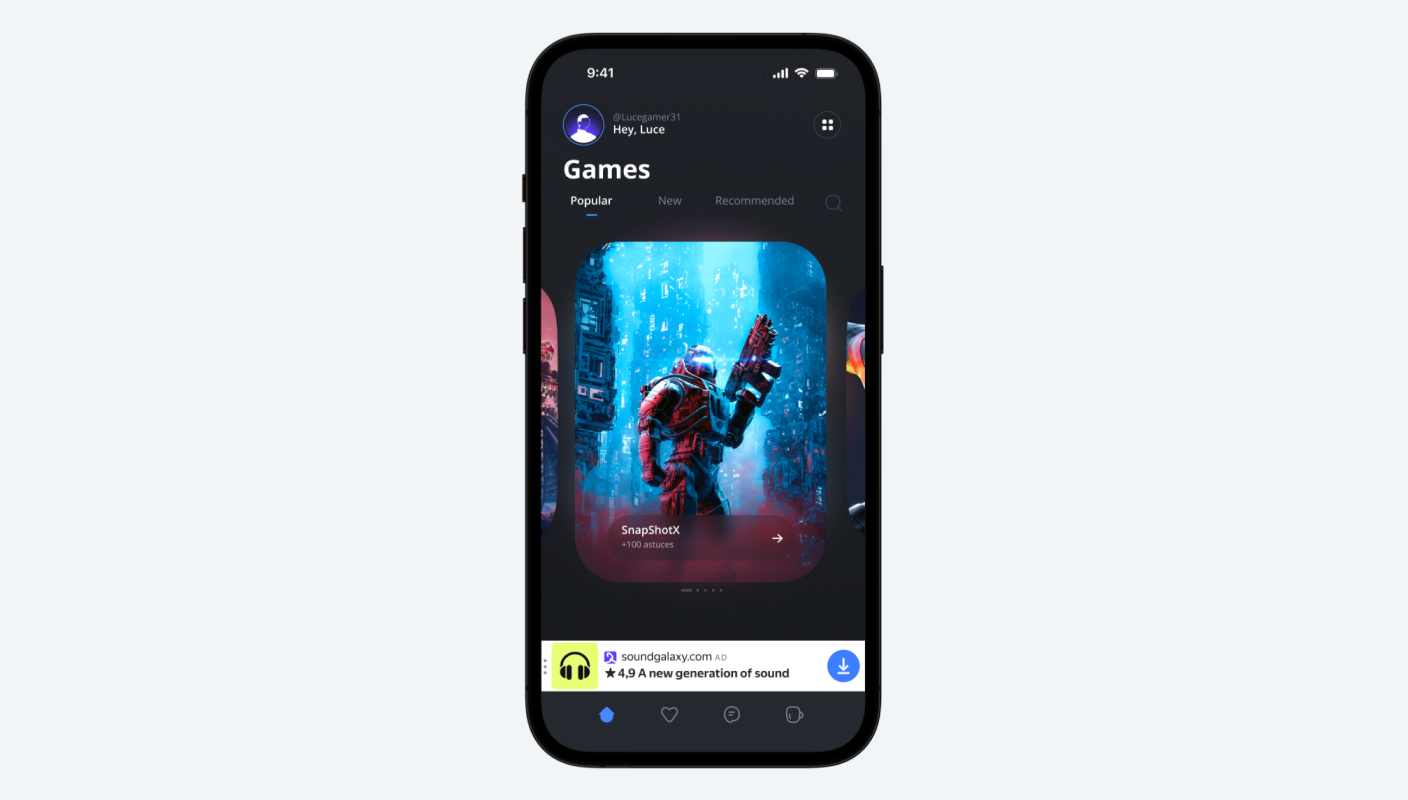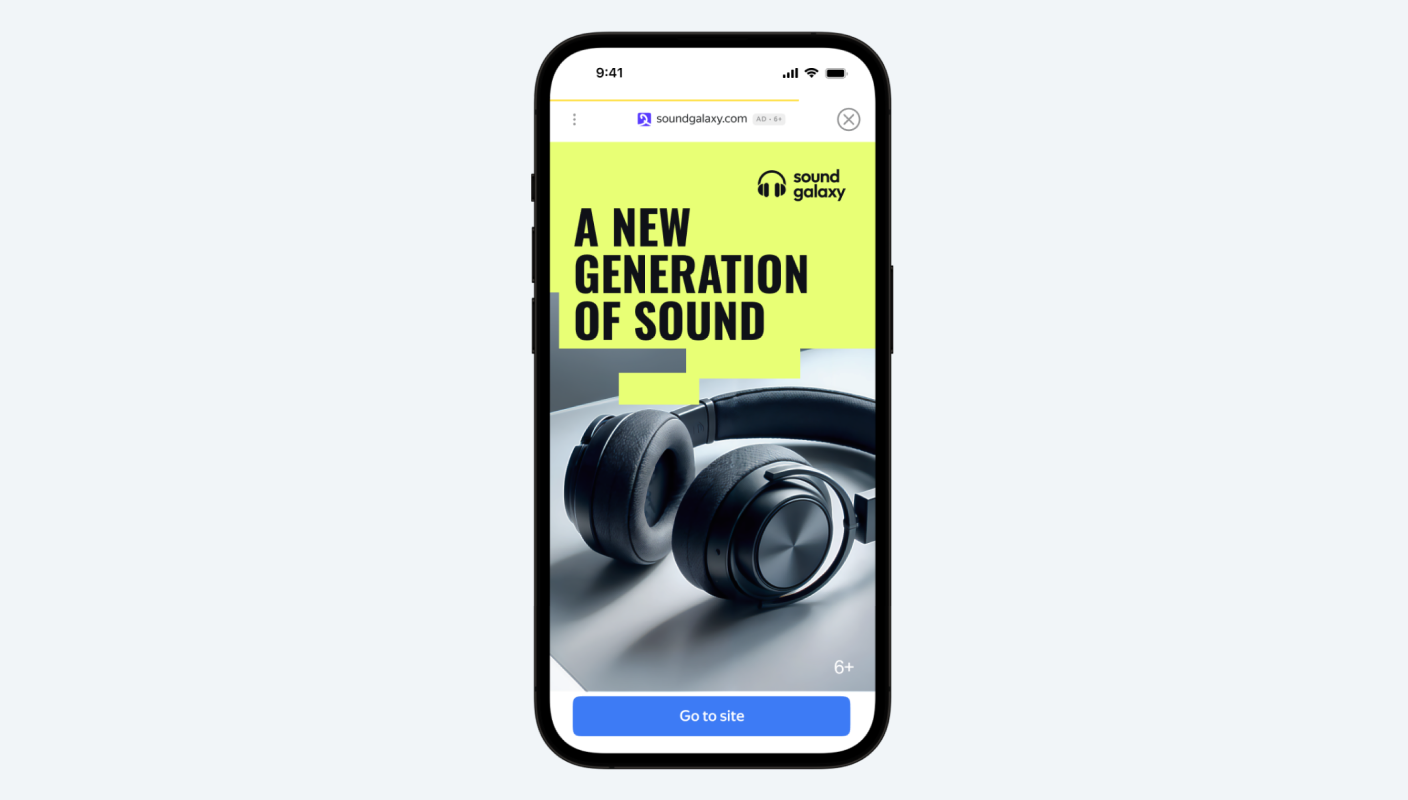Native Advertising Examples: Top-10 Campaigns to Learn From


What is native advertising – and why should you care?
Native advertising is paid advertising that mimics its surrounding web page environment. Unlike traditional ads that interrupt experiences, native ads match the content flow, visuals, and editorial voice of their host platform.
This approach keeps platforms consistent rather than making promotions visible. Sponsored content appears as articles, videos, or social posts that provide genuine utility while maintaining authentic editorial tone.
Performance data validates native ad superiority. Native ads generate an 18% lift in purchase intent compared to banner advertisements, while achieving 9% higher brand affinity responses among consumers.
The CTR advantage is compelling content: native ads achieve 0.16% CTR on desktop and 0.38% on mobile, significantly outperforming banner ads’ 0.11% average.
Consumer behavior reveals deeper engagement patterns. 32% of consumers willingly share native advertisements with friends or family, compared to just 19% for display ads.
eMarketer estimates that advertisers spent $68.17 billion on native social media display ads in 2024. Future Market Insights projects the global native content industry will reach $733.32 billion by 2035.
Platforms like Yango Ads Campaigns have evolved to meet this growing demand with specialized tools to implement and optimize native campaigns.

How do you spot native advertising?
Native ads reveal themselves through subtle indicators most consumers miss. Unlike banner ads that scream for attention, native advertisements blend seamlessly into your digital experience.
Social media platforms use sophisticated camouflage. In-feed ads on Facebook, Instagram, and LinkedIn appear between organic posts with only small "Sponsored" labels. Twitter uses "Promoted" tags, while TikTok displays discrete "Ad" indicators.
Google search results place sponsored listings at the top with minimal "Ad" badges – often generating higher click-through rates because users mistake them for organic results.
The defining characteristic of effective native advertising is invisibility. These subtle indicators require active attention to identify. News websites integrate sponsored articles so seamlessly that only careful readers notice "Sponsored Content" disclaimers.
Native advertising vs. traditional advertising
The core difference lies in audience integration strategy. Traditional approaches prioritize visibility through disruption. Native advertising achieves effectiveness through seamlessly integrating within existing content flow.
This shift reflects deeper consumer behavior changes. Research shows 67% of users actively ignore traditional banner advertisements – a phenomenon called "banner blindness".
Traditional methods succeed through immediate recognition using bold visuals and direct calls-to-action that intentionally disrupt user experience. Native advertising prioritizes contextual relevance, allowing promotional content to blend naturally with editorial environments.
Appearance
Native ads blend with surrounding content through seamless visual integration. Traditional ads deliberately stand out with contrasting designs that disrupt natural content flow.
User experience
Native advertising enhances user experience through non-disruptive content integration. Conventional advertising interrupts user journeys with intrusive pop-ups and banners.
Engagement
Native advertising achieves higher engagement by creating content that resonates with ongoing user activity. Display advertising generates lower engagement due to its overtly promotional nature.
Content relevance
Native advertising employs tailored content that aligns with platform context and user interests. Banner advertisingrelies on generalized content regardless of placement environment.
Perception
Users perceive native ads as informative and entertaining content that adds value. Display ads often appear intrusive, contributing to ad fatigue and negative brand associations.
Native advertising vs. content marketing
These approaches differ in audience engagement strategy and platform ownership. Both prioritize value delivery over direct promotion but serve different marketing strategy objectives.
Native advertising distributes content through third-party platforms. It helps reach new prospects using established audiences. It focuses on blending with existing editorial environments.
Content marketing builds trust through own content platforms including company websites and branded social channels. This establishes businesses as industry experts while nurturing existing audience relationships.
Smart marketers integrate both approaches – using content marketing for foundational trust building while deploying native advertising for strategic audience expansion across relevant third-party platforms.

Why native advertising is becoming more popular
Native advertising’s explosive growth reflects consumer behavior shifts and digital advertising ecosystem evolution. Multiple factors converge to explain this approach’s central role in modern advertising trends.
Versatility defines native advertising’s competitive advantage, demonstrating remarkable adaptability across diverse platforms and mediums.
Most people successfully ignore traditional advertising
Modern consumers navigate environments saturated with promotional messaging. Research shows the average person encounters approximately 6,000 advertisements daily.
Banner blindness represents consumers’ learned ability to systematically ignore paid ads during online activities. Users actively treat traditional advertising as "void of information" zones to be efficiently bypassed.
Ad overload has fundamentally altered consumer digital advertising interaction. Users evolved sophisticated mental filters that automatically categorize and dismiss promotional content.
Social media advertising is becoming more expensive
Social media ads have become increasingly expensive, requiring substantial budgets for basic visibility in social media feeds. Media platforms systematically reduced organic reach, transforming into "pay to play" environments requiring substantial marketing budgets for basic visibility.
Savvy marketing teams are branching out into new channels. Native ads tend to get better engagement for a steady cost, and they let you reach people on sites your audience already trusts.
Brand association benefits
Native advertisements leverage host publication credibility that media publications cultivated through editorial independence and journalistic integrity. This reputation transfer creates immediate trust advantages.
Media publications must carefully select native advertising campaign partners to protect their valuable reputation, creating mutually beneficial quality control.
Privacy considerations
Traditional display and social advertising relies on personal data collection conflicting with consumer privacy concerns and regulatory frameworks. GDPR regulations fundamentally altered the digital advertising landscape.
Native advertising offers compelling solutions by relying on contextual relevance rather than invasive personal data collection.
Native advertising works
Native advertising is clearly effective – especially on premium news websites. It earns higher trust (44%), more clicks (21%), and influences purchases (24%) better than ads on social media. The key to this success is trust.
People trust native ads more because they blend naturally into the content they already value. For instance, Telegram advertising through Yango Ads Campaigns helps you reach highly engaged audiences by delivering messages that feel genuinely interesting and natural
Media companies are offering better options
The publishing industry’s economic shift sparked new native advertising innovations. Traditional revenue streams from print subscriptions decline while programmatic display yields disappointing returns.
61% of publishers now consider native advertising their most important digital revenue stream.
Media companies invest in advanced digital storytelling platforms producing immersive visual stories matching their finest journalism. Publishers like The New York Times T Brand Studio produce native content achieving viral distribution on editorial merit.
Benefits of native advertising
Truly effective native advertising is about more than just blending in. To maximize its impact, focus on giving real value to your audience while still achieving your marketing goals. Native advertising creates positive associations between brands and valued content experiences.

Higher engagement rates
Native advertising achieves superior engagement because content appearance aligns with user expectations. Native ads tend to get much higher click-through rates than banner ads, especially on mobile. People are also more willing to share native ads with others compared to standard display ads.
32% of consumers willingly share native ad content compared to 19% for display ads.
Better user experience
When brands integrate non-disruptively, native advertising enhances rather than interrupts user journeys. 26% of users perceive native ads as less intrusive than traditional display formats.
Increased brand recall
Contextual relevance within trusted editorial environments creates lasting impression formation. Native advertising generates 9% higher brand affinity responses compared to banner advertisements.
Improved targeting
Native advertising leverages contextual understanding alongside demographic data to create personalized messaging respecting privacy boundaries. This contextual approach addresses privacy concerns while maintaining effectiveness.
Best practices for native advertising
Native advertising success requires sophisticated understanding of audience psychology and platform dynamics. Recent neuroscience research reveals consumers process native content through different cognitive pathways than traditional advertising. To maximize native advertising spend, brands must create high quality content that serves audience needs.
Key Strategic Principles:
- Authentic integration respects audience intelligence;
- Value-first approaches generate organic engagement;
- Contextual relevance trumps promotional frequency;
- Trust-building enables long-term brand relationships.
Transparency is key
Transparency isn’t just about following the rules – it’s a way to build trust that makes your campaign perform better. When you’re upfront that content is sponsored, readers are more likely to trust and engage with it. Research shows 68% of consumers trust native ads in editorial contexts when properly disclosed.
Provide value
Make your native ads helpful, not just promotional. When your content truly provides value to the audience, people engage with it much more than with pushy ads.
Match the platform’s aesthetics
Make sure your ads match the look and feel of the platform. Ads that fit seamlessly into a platform’s style get noticed much more than ones that obviously look like ads.
Use high-quality visuals
Visual content quality directly impacts attention capture and memory formation. Professional visual content signals brand investment in audience experience.
Test and optimize
In the fast-changing digital world, you need to keep testing and refining your campaigns. Continually optimizing a campaign can significantly lower your cost per click compared to a set-it-and-forget-it approach.
Types of native advertising
Native advertising works versatilely because it adapts remarkably across diverse digital platforms and content mediums. Each native ad format serves distinct marketing purposes while targeting specific audiences across various platforms.
In-feed ads on social media
On social media, in-feed ads are a prime example of native advertising done right. Platforms like Instagram, Facebook, and LinkedIn blend naturally with user content, achieving significantly higher viewability compared to traditional display formats.
Strategic Implementation:
- Match platform-specific visual conventions;
- Use native video formats for maximum engagement;
- Integrate user-generated content elements;
- Leverage platform algorithms through authentic engagement.
Content recommendations
Almost every news site now has a ’Recommended Articles’ section that often mixes in sponsored stories as if they were regular content. This native approach lets advertisers promote articles in a natural way without disrupting the reader’s experience.
Search & promoted listings
Embedding ads in search results lets you reach shoppers who are already looking for products like yours. For example, those sponsored product listings on Amazon get a large share of affiliate clicks.
With Yango Ads Campaigns, you can use advanced search ads tool to capture these ready-to-buy customers right when they’re searching
In-game advertising
In-game ads can appear naturally right inside gameplay – on virtual billboards, branded clothing, or contextual placements – so they feel like part of the game. Players tend to remember these in-game ads far better than traditional display formats. Yango Ads App Campaigns makes it easy for you to launch effective in-game ads in mobile gaming environments.
Sponsored content
Sponsored content on a popular website is one of the most engaging forms of native advertising because it reads like regular editorial content. In fact, a top-notch sponsored story can even go viral on social media, giving your brand exposure far beyond what you paid for.
Branded playlists on music streaming platforms
Branded playlists help brands create powerful emotional connections with their audience through curated musical experiences. Spotify’s branded playlist partnerships achieve 40% higher engagement rates than traditional audio advertising.
Through special projects on select markets, Yango Ads Campaigns can arrange branded playlist placements on popular streaming platforms - reach out to our team to explore these custom advertising opportunities.
Compelling native advertising examples
These digital storytelling examples of native advertising demonstrate how sophisticated brands create engaging multimedia experiences serving audience interests while advancing promotional objectives.
1. Volkswagen road trip guide

Volkswagen revolutionized automotive marketing through comprehensive travel guide content positioning vehicles as adventure enablers. The campaign featured stunning photography of remote locations, creating aspirational content encouraging mental planning for future journeys.
2. Elle and Dove’s "Livet under armen" campaign

Elle and Dove collaborated on groundbreaking native content titled "Livet under armen" (Life under the Arm), featuring actress Bianca Kronlöf exploring beauty industry norms surrounding women’s underarm taboos.
Rather than promoting specific DOVE products, the campaign fostered meaningful social dialogue about body acceptance. This transcended traditional beauty marketing by addressing genuine psychological concerns.
3. T Brand Studio and Birkenstock’s "Ugly for a reason"

T Brand Studio partnered with Birkenstock creating the revolutionary "Ugly For a Reason" campaign – a three-part documentary series repositioning orthopedic footwear through scientific storytelling.
The campaign assembled biomechanists, anatomy professors, ballerinas, and fashion historians exploring foot health through evolutionary perspectives. Post-campaign research demonstrated significant brand awareness improvements.
4. Allbirds in The New York Times

Allbirds collaborated with The New York Times creating "The View From Above", exploring climate change threats to birds and ecosystem balance. The campaign demonstrated perfect brand-content alignment through sophisticated multimedia storytelling.
5. The Fred Hollows Foundation interactive experience

The Fred Hollows Foundation revolutionized charitable marketing through innovative immersive content literally placing users into vision-impaired perspectives. The campaign’s visual design employed sophisticated scroll effects transitioning screens from darkness to emerging imagery.
6. Eni Energy on CNN

Eni Energy partnered with CNN creating comprehensive native ad showcasing their Green River Project in Niger Delta, positioning the oil corporation as environmentally responsible through authentic storytelling.
7. KPMG on Forbes

KPMG launched "The Great Rewrite" campaign on Forbes BrandVoice, positioning the consulting firm as thought leader in the evolving digital business landscape.
8. Orbit Gum on CollegeHumor

Orbit Gum strategically partnered with YouTube comedy channel CollegeHumor launching "Dating Footnotes," a brilliant video format native advertisement timed for Valentine’s Day audiences.
9. Macy’s interactive shopping experience

Macy’s revolutionized e-commerce native advertising by presenting complete outfit “looks” in its ads. This approach transformed individual product promotions into inspiring style stories.
10. Branded webinars and workshops

Branded webinars represent sophisticated native advertising positioning sponsors as thought leadership authorities while delivering genuine educational value to professional audiences.
How to make the most of your native advertising strategy
To optimize your native advertising strategy, you need to understand your audience’s psychology, platform dynamics, and how to integrate content effectively. Recent neuroscience research reveals that consumers process native content through different cognitive pathways than traditional advertising, creating unique opportunities for meaningful brand engagement when executed with precision.
Best practices for native advertising success extend far beyond simple content camouflage. Effective campaign planning demands comprehensive analysis of audience behavior patterns, platform-specific consumption habits, and editorial environment characteristics that influence content reception and engagement likelihood.
Strategy optimization begins with recognizing that native advertising operates as a value exchange system: brands provide genuine utility in return for audience attention and consideration. This fundamental principle shapes every strategic decision from audience targeting to content creation, platform selection, and performance measurement protocols.
Contemporary marketing leaders understand that successful native advertising creates meaningful, contextually relevant interactions rather than simply distributing promotional messages. The following strategic considerations enable marketers to maximize native advertising effectiveness while building sustainable audience relationships through authentic value creation.
Work with the tone and style of the publication
Seamless integration requires meticulous attention to publication fit across voice, style, and content approach. Partnership selection prioritizes alignment between brand offerings and publication audiences.
Focus on quality content, not sales
Native advertising succeeds by prioritizing content value creation serving audience interests. High quality content standards match host publication standards to maintain editorial credibility.
Leverage visual elements
Visual content integration transforms native advertising into compelling multimedia storytelling experiences. Strategic media assets deployment significantly enhances content engagement.
Use interactive techniques
Scroll-based effects and scrollytelling methods create engaging native advertising experiences transforming passive content consumption into active exploration.

Ready to take your advertising to the next level?
FAQs
What is a native style ad?
Native ads are promotional content designed to match the visual format, editorial tone, and user experience of the platform where they appear, creating seamless integration with surrounding content.
Why is native advertising so popular?
Native advertising achieves superior engagement rates because it provides genuine value while respecting user intent, generating 18% higher purchase intent and significantly better click-through rates than traditional formats.
Is native advertising paid?
Yes, native advertising represents paid ads that brands sponsor to reach target audiences, but it’s clearly labeled as "sponsored" or "promoted" to maintain transparency and regulatory compliance.


